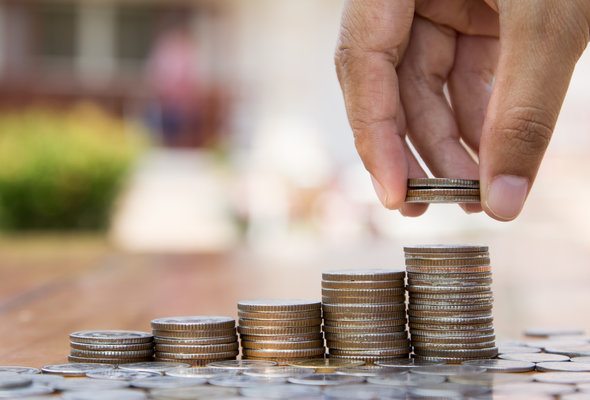
Chances are, you’re pretty intimate with your checking account. This type of account is typically used for regular spending. You may even move money in and out of it multiple times a day. The best checking accounts are affordable to maintain, earn some interest and provide easy access to your cash when you need it. If you’re looking for ways to grow your wealth by getting it out of your checking account and into better investments, consider speaking with a financial advisor to create a plan.
Overview of Checking Accounts in the U.S.
The Federal Reserve Survey of Consumer Finances offers a trove of information about checking account usage in the U.S. It found that more than 92% of the population has a checking account. When the 8% without a checking account were asked why they didn’t have one, the most popular answer was not wanting to deal with banks.
This was followed closely by not writing enough checks to make a checking account worthwhile. Other reasons included high fees for services, not having enough money or suffering from credit problems.
Of course, most of us need checking accounts – at the very least to get direct deposit payments from an employer. But how much should we be keeping in our checking account? It should be enough to cover regular spending, but not so much that you’re missing out on interest earnings elsewhere. Compare yourself to the medians below to see where you stand.
Median and Average Checking Account Balance in the US
Here is the median and average checking account balances in the US, for Americans who have checking accounts:
- Median: $2,900
- Average (Mean): $9,132
The households with much higher incomes seriously skew the numbers when you calculate the mean. Checking account balances are lower than the median and average savings account balances in the U.S. They aren’t, however, so low to indicate trouble paying typical living expenses. To get a better idea of where you stand, you can compare the median checking account balance filtered by demographic.
Average Checking Account Balance by Age
As Americans get older, they tend to have more in their checking accounts – until they reach a certain threshold. Those under 35 have an average of $4,058 and a median of $1,200. Both average and median checking account balances rise consistently until age 75 when they decrease.
This is likely because lifestyles hit a peak during the end of your career, while rent and expenses tend to remain lower in early adulthood and retirement. As it would appear, monthly expenses rarely exceed $16,000, which is the average balance for those aged 65-74.
For a clearer picture, check out the full breakdown of median checking account balance by age:
- Under 35: $1,200
- 35-44: $2,000
- 45-54: $2,850
- 55-64: $3,850
- 65-74: $6,000
- 75+: $5,000
Average Checking Account Balance by Income

Unsurprisingly, Americans who make more money keep more in their checking accounts. It’s likely that higher salaries encourage higher costs of living: higher rent, food, clothes, and entertainment bills. The difference grows more distinct with every income bracket.
In fact, the median checking account balances nearly double with every new bracket until we reach the highest bracket: an annual income of $160,000 or more. Those who make less than $25,000 a year tend to keep around $500 in checking, while those raking in more than $160,000 have a median balance of $25,000 and an average balance of $721,613.
The numbers seem exceptionally high for checking accounts but could be a reflection of take-home pay deposited directly into checking. Those below the $25,000 income threshold are also least likely to have a checking account. They likely utilize alternative methods like prepaid cards and money orders. You should always do your best to live within your means while taking advantage of the best financial instruments at your disposal. Check out the full breakdown of the median checking account balance by income:
- Under $25,000: $500
- $25,000-44,999: $1,000
- $45,000-69,999: $1,700
- $70,000-114,999: $3,000
- $115,000-159,999: $5,900
- $160.000+: $25,000
Average Checking Account Balance by Gender
On average, households led by men have nearly three times larger checking account balances than those led by women: $11,182 vs. $3,658. The difference grows even larger when comparing median checking account balances. The male median checking account balance is nearly four times larger than the female median. This could be a reflection of income disparity, as well as typical family dynamics in women-led households (i.e. greater incidence of single parents). Here’s the breakdown of the median checking account balance by gender:
- Male: $4,000
- Female: $1,000
Average Checking Account Balance by Race
Race also seems to affect how much Americans have in their checking account. Both average and median checking account balances were four times greater for white non-Hispanic households than for black and Hispanic ones. However, it is important to note that nearly three-quarters of those surveyed by the Federal Reserve for the Survey of Consumer Finances were white non-Hispanic. White respondents were also much more likely to have a checking account at all. This is the breakdown of median checking account balance by race:
- White Non-Hispanic: $3,800
- Black: $895
- Hispanic: $900
Historical Trends in Checking Accounts
Median checking account balances seem to be on the rise for the last decade of surveys. Balances took a slight hit since the recession, but this could indicate greater use of checking accounts and financial services in general. The Federal Reserve and Federal Deposit Insurance Corporation have found that more of the country is becoming banked as time goes on. While it may not be best to keep more than you need in your checking, almost every American should likely use this financial service.
How to Manage Your Checking Account

Even though checking accounts are pretty straightforward, there are some checking account best practices to keep in mind. Although your account is often used for multiple purposes, you still want to review it as strictly as you check your credit card statement. You should run the numbers once a month to ensure more is going in than coming out. You don’t want to end up in a position where you’re bouncing checks, which could lead to fees and a hit to your credit score. Most banks allow you to set up alerts in case your account dips below a certain amount.
Keeping a close eye on your checking account use will also help you spot suspicious activity and avoid identity theft. You should also be mindful of your ATM usage. Some out-of-network ATMs charge fees for withdrawals. Mobile and online banking can help you manage your finances and find in-network ATMs without excess fees.
Tips for Money Management
- If you want help with setting and meeting your financial goals, you might want to consider reaching out to a financial advisor. SmartAsset’s free tool matches you with up to three financial advisors who serve your area, and you can interview your advisor matches at no cost to decide which one is right for you. If you’re ready to find an advisor who can help you achieve your financial goals, get started now.
- If you want to maximize your savings but are spending money left in your checking account then you should consider finding the best savings account to stash your money for a rainy day.
Photo credits: ©iStock.com/RyanJLane, ©iStock.com/Sasiistock, ©iStock.com/Geber86